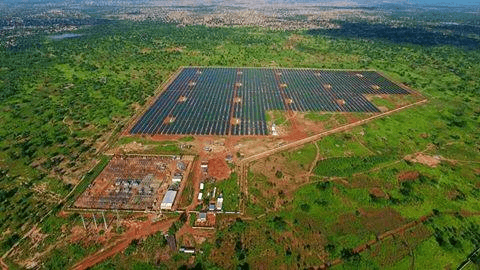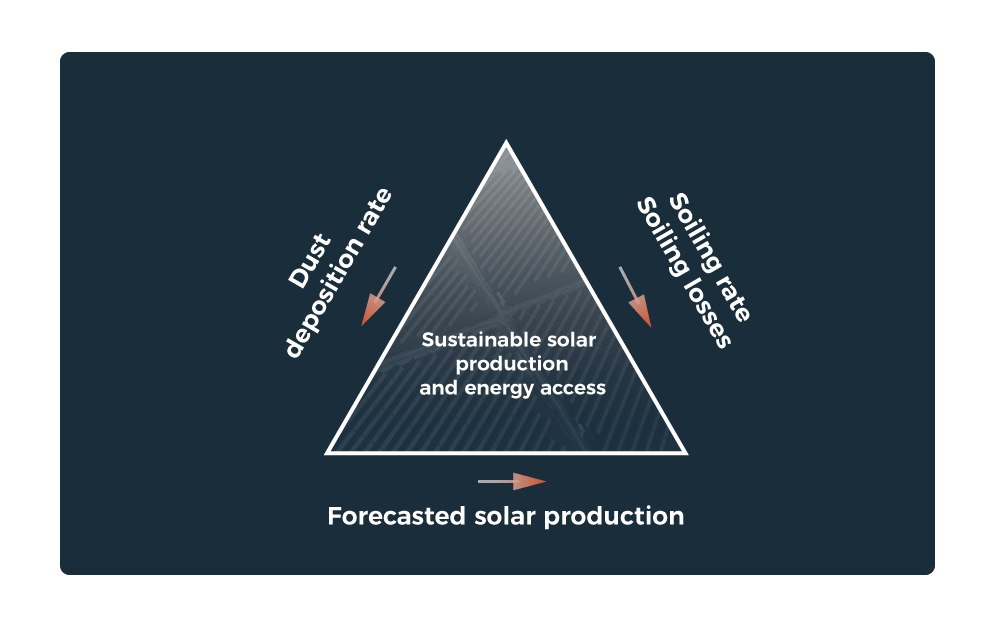Understanding Climate-Energy-Water interrelationships through mineral dust effects in West Africa
null
Innovation
04/11/2022
by
Guillaume Tremoy
7 min
null
null
Steadysun is taking part in the NETWAT (NExus ClimaTe - WATer - Energy) research project. This project aims at developing technological solutions to foster the integration of photovoltaic (PV) production in West Africa without compromising the sustainability of water resource management; a major issue in this region which records the highest atmospheric dust load in the world.
null
null
null
null
null
null
null
Steadysun will bring its scientific and technical expertise:
- For improving the quality of weather and solar forecasts
- In the monitoring of PV soiling
- On PV plants maintenance strategies

null
null
Understanding Climate-Energy-Water interrelationships through mineral dust effects in West Africa
null
null
null
null
We are proud to participate in this inter and transdisciplinary research and innovation project, and thus contribute to the energy development of the African continent.
This 4-year project is led by The Institut des Géosciences de l'Environnement and also includes the Laboratoire Interuniversitaire des Systèmes Atmosphériques. It is supported by the ANR (National Research Agency).
null
null

null
null
null
West African states made the energy transition one of the top priorities to fulfill their commitments in the Paris climate agreements. Meeting this challenge involves accelerating access to electricity for hundreds of millions of Africans, while reducing the use of fossil fuels and addressing key issues such as the evaluation of renewable resources and the conflicts related to multiple uses of water resources in a region under demographic growth.
In this context, the large-scale deployment of solar photovoltaics is becoming increasingly important. Installed capacities are expected to reach 8-20 GWp by 2030 in the Economic Community of West Africa (ECOWAS) (IRENA, 2018). However, the sensitivity of solar energy to weather conditions creates a new form of vulnerability to electricity and water supply security.
The atmospheric concentration of mineral dust in West Africa is the highest in the world due to its proximity to the Sahara and Sahel. However, dust is still poorly accounted for in weather forecasting models even though it interacts strongly with solar radiation and clouds through complex processes. In addition, soiling on solar panels results in significant electrical losses. Water must then be mobilized for maintenance and cleaning operations, competing with vital uses and exposing a vulnerable resource to further degradation.
With mineral dust as the driving force behind the inter- and trans-disciplinary approach, the NETWAT project will develop technological solutions to facilitate the integration of solar energy into power systems in West Africa and optimize the profitability of power plants without compromising the sustainability of water resources in the region.
null
null
null
null
null
Over the next four years, NETWAT will focus on:
- Improving the understanding of the dust cycle in West Africa and its direct and indirect effects on the solar resource and production.
- Developing an innovative weather forecasting chain and design reliable and efficient decision support tools to optimize power grid management and solar production.
- Evaluating the water footprint of solar power plants and developing new sustainable predictive maintenance strategies based on the evolution PV module soiling.
null
null
null
null
null
More information : netwat.osug.fr
null
null
null
null
null
null
null
null
null
null
null
null
null
null
null
null
null
null
null
null
null
null
null
null
null
null
null
null
null
null
null
null
null
